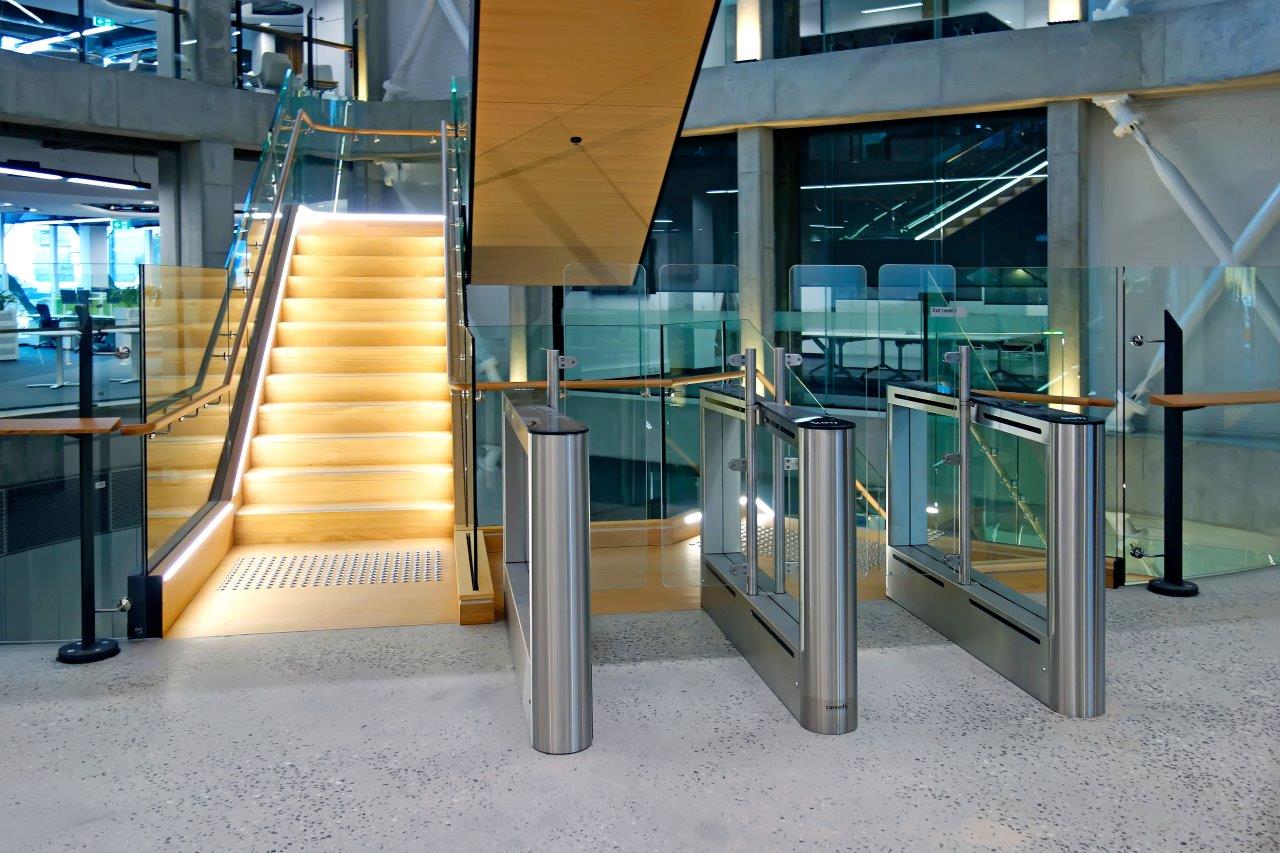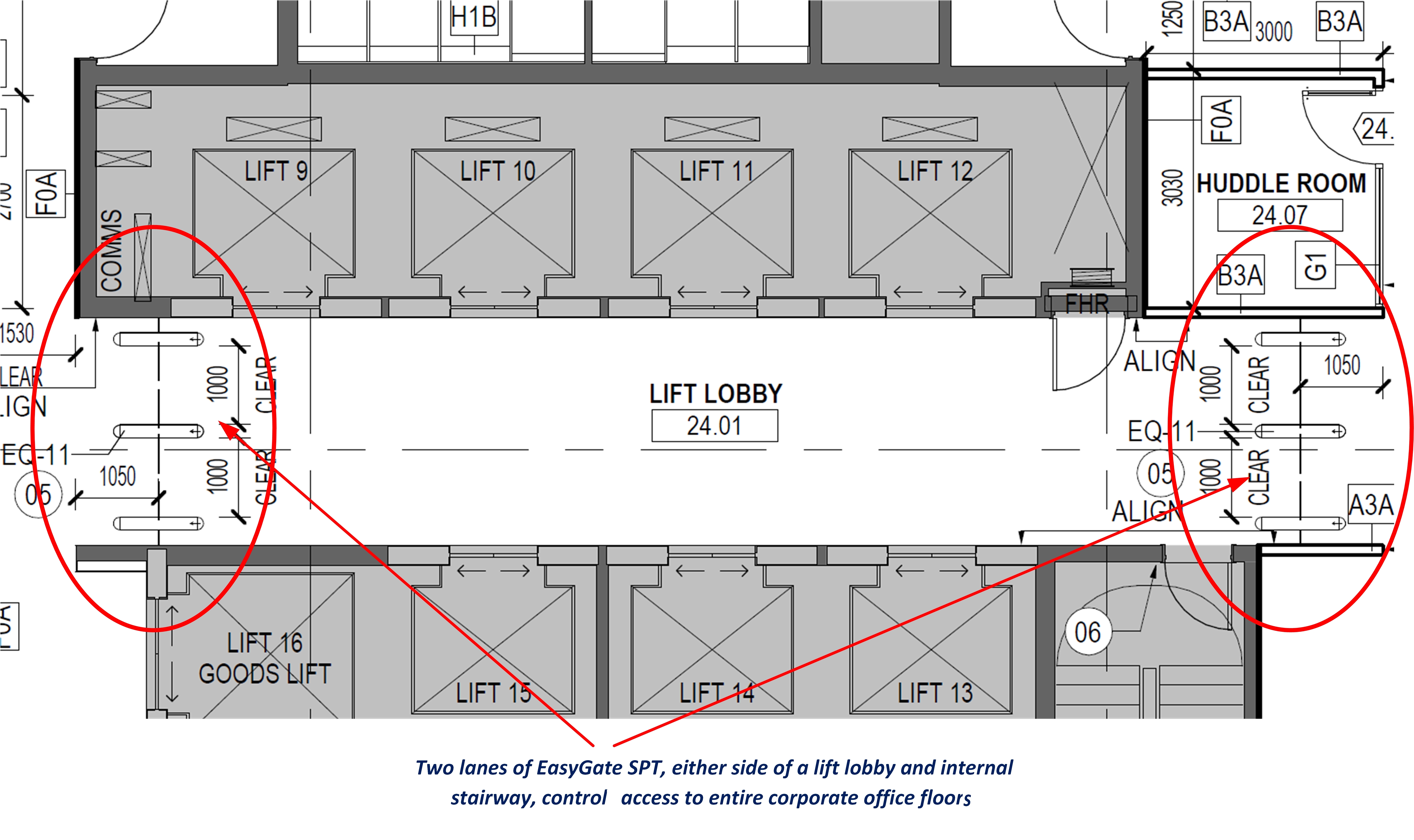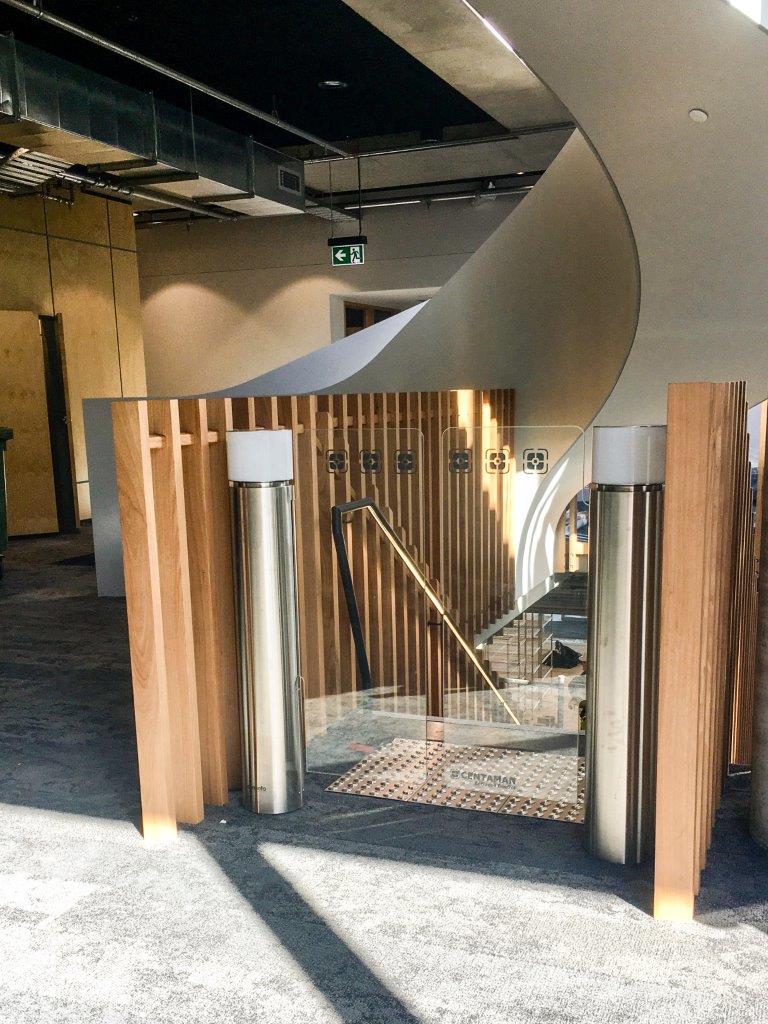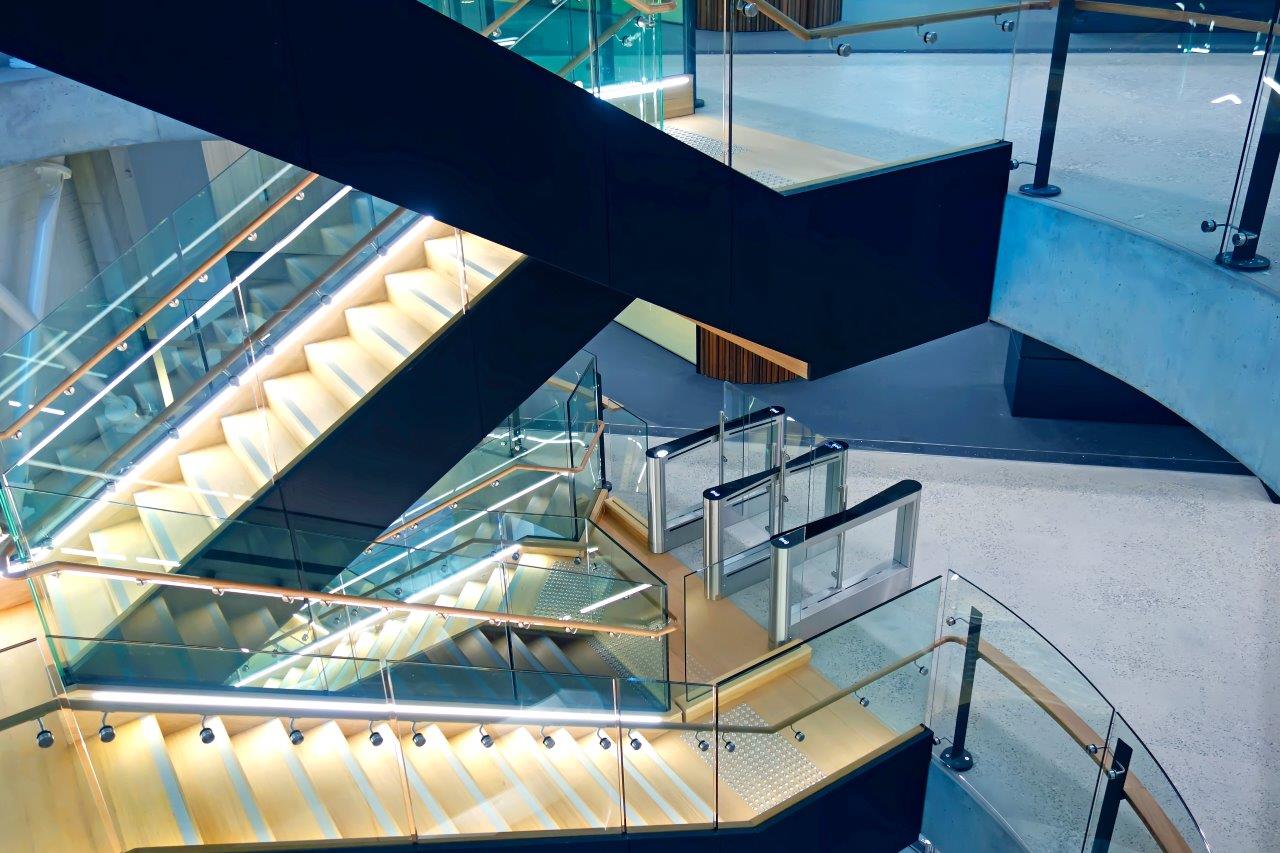
26 Feb The Best Way to Control Access to your Corporate Office
Securing a multi-tenanted corporate office building can be complicated. Lifts provide members of the public with ready access to most floors and it’s easy for doors from internal stairwells to be left unlocked or ajar. Even if certain levels in your corporate office require a swipe card to access, that doesn’t stop unauthorised visitors from following one of your employees out of the lift once they reach their floor.
A solution often employed overseas is to have turnstiles in the lobby, accompanied by a security and concierge team that greets and vets everybody who enters the building before letting their host know of their arrival so they can be escorted to the correct meeting room.
While this solution works, it’s not particularly common in Australia and New Zealand. In our part of the world many building tenants prefer to make security as unobtrusive and unintimidating as possible, particularly in corporate offices and other facilities that aren’t always considered by the public to be high-security sites.
Fortunately, there are other ways to control access by floor, for businesses that don’t want to control access building-wide by having security at the ground floor entrance. Controlling access by floor also works well in multi-tenanted buildings, where different companies might occupy a few floors each.
Speedgates on each floor
A simple and highly secure solution is to install speedgates either side of the lifts on each floor you occupy. These gates prevent unauthorised visitors from tailgating employees out of the lift and into your sensitive office space.
On floors which include a reception, the greeting desk can be inside these gates so visitors can be welcomed and granted access.
During a recent tender for a well-known company in Brisbane, we proposed the installation of two lanes of EasyGate SPT speedgates either side of the lifts on five floors they occupy. The EasyGate SPT was the ideal solution because its slimline pedestals had a small enough footprint to allow for two access lanes, rather than one, reducing wait times during busy periods. These speedgates provide for disabled access, ensuring compliance with the Disability Discrimination Act, and have a whisper-quiet magnetic direct drive motor that drives 1,200mm-high swing barrier doors, which can be emblazoned with company colours.

Other options that could also have worked well would have been the EasyGate Elite or EasyGate Liftcall, both of which also have narrow pedestals and feature a swing barrier design.
Speedgates such as the EasyGate LX or EasyGate LG, which use retracting barriers, would also have been a possibility. However, the wider pedestals required to house the barriers when they are retracted would only have allowed for one lane either side of the lifts, rather than two.
Securing internal stair cases
Internal stair cases are another weak point in many corporate offices. All too often doors to stairwells are left unlocked or ajar, defeating any other security mechanisms that have been put in place. This can allow unauthorised access between floors occupied by different tenants.
Unsecured internal staircases can also pose problems for businesses that want to restrict access between different floors they occupy so project teams can’t wander into other teams’ areas. This can be important for accountancy companies and others that need to secure areas for client confidentiality and legislative compliance.
A popular means of securing access to and from internal stairwells is a tandem SwingGate. Gates of this kind open for a set amount of time (6 to 10 seconds typically) when somebody swipes their access card. During that time any amount of people can pass without the need to swipe their own access card.

The SwingGate does not include sensors to detect people passing through while it is open, but is smart enough to detect if the swing barriers make contact with anybody or anything while closing. It has a compact footprint and can be configured with a 1,200mm high barrier to deter climb over attempts and a lane width of up to 1,400mm.

If you need a solution that ensures every person passing through uses a swipecard, then the EasyGate SG may be ideal. This speedgate has infrared beam-sensors that enable it to start closing as soon as the person who has scanned their card has walked through. These beams sense if anybody is passing through and ensure the barrier won’t close until the lane is clear. If a second person tries to tailgate through the gate while it is open, without using an access card, an alarm is triggered. The EasyGate SG has an 840mm high barrier and a lane width of up to 1,000mm.

A third option is installation of an EasyGate SPT speedgate. Like the SG model, this gate uses infrared beams to ensure just one person passes through each time an access card is scanned. However, the SPT has higher barriers (1,800mm) to deter climb over attempts, and a lane width or up to 1,100mm.
Sleek, safe and secure
The use of entrance control gates can add a critical extra level of security in corporate offices, sharply reducing the risk of a costly security breach and improving the safety of your workplace. The attractive slimline appearance of many modern speedgates makes them unobtrusive and unintimidating, and many can now be configured to allow for wheelchair access, ensuring the compliance with the Disability Discrimination Act.
Find Out More
For more information on Entrance Control’s Corporate Office solutions, visit our Corporate Office Page.

